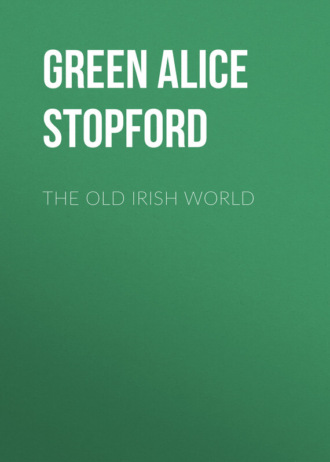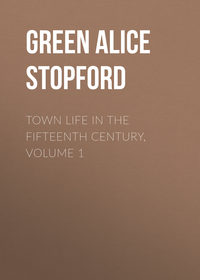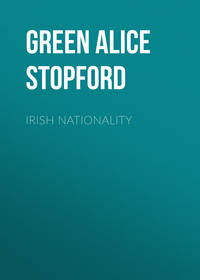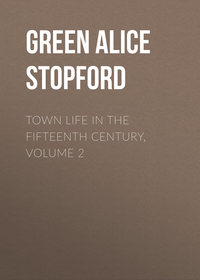 полная версия
полная версияThe Old Irish World
As for intellectual culture, Mr. Dunlop is brevity itself. He has scarce a page for that chimera. The Irish were barbarous and the Anglo-Normans contaminated. His method is summary. The evidence of Mr. Whitley Stokes, of Dr. Norman Moore, of Mr. S. H. O’Grady, of Dr. Kuno Meyer has too little importance with him to be mentioned, and he can thus more easily avoid all proof of Irish scientific skill in medicine, or of the admirable quality of their translations from the Latin. He necessarily omits all mention of the many Irish scholars on the Continent, for has he not himself told us only one Irish chieftain made the perilous journey to Rome and back? He has no reference to buildings or arts which indicate the intercourse of Irish chiefs with the Continent. He is silent on the schools from which Irishmen were able to pass to foreign universities. He seems not to have heard of evidence of Latin culture collected by Mr. Justice Madden. And most wonderful to say, he seems entirely unaware of the importance of the list I have published, for the first time (by the generous kindness of a great scholar), of Irish translations of Continental works. Perhaps he felt himself anticipated by the conclusive comment I saw from a dashing newspaper critic, that “the Irish evidently satisfied themselves with translations!” In any case, he never hints at this list or its value as evidence. So astonishing a neglect of the greater matters of evidence, while every detail that could by any means discredit me is searched out, is surely a grave abuse of the historical method. In the matter of culture Mr. Dunlop confines himself with a singular restraint to a single topic – the list of Irishmen at Oxford. In this he counts many Anglo-Norman and only seventeen Gaelic names, and this solitary fact is enough to make him astonished that I “did not recognise how utterly untenable is her theory of the absorption of Anglo-Irish culture by the native Irish.” Those readers who will turn to the chapters on Irish learning in my book will perhaps be astonished not at the theory that there was culture in Ireland, but at the travesty of that theory and the suppression of evidence which serves as historical criticism for Mr. Dunlop.
Mr. Dunlop meets with a direct negative my statement that Sussex and Sidney carried off in their train every notable chief’s son they could lay hands on, but he gives no more than his own authority. My statement is perhaps too comprehensive, but I have given numerous instances (pp. 425-437) to show that the method certainly used by Sussex and Sidney, so far as they could, was steadily increased and extended in proportion as the English power gradually spread over one Irish region after another. The English took over the Irish system of hostages, but they developed it in a new way. The Catholic chief’s son was brought up in London as a Protestant, in English law and language and tradition, with the avowed purpose of spiritually severing him from his people, and leaving the clan without a natural leader or defender in the national conflict; their chiefs, in fact, were to be made the very instruments for dividing and subjugating their own people. In the words I quoted, it was a method which “not only rent asunder the bonds of national loyalty and of natural affection, but which forced parent and child alike to believe that in this world and in the world to come they were divided by an impassable abyss.” Surely there is no likeness in this deliberate plan to the Irish chief’s use of his hostage; it was, indeed, practised with consummate art by Turkey.
In this article Mr. Dunlop proposed to prove two facts: first, that Celtic civilisation is largely a figment of my imagination; and, secondly, that far from composing one nation, the English element in Ireland was proud of its origin, and struggled incessantly to preserve itself intact from Celtic influence. One part of his plan is destructive, and the second constructive. Unfortunately the work of destruction has proved so alluring that the constructive scheme is abandoned. As to the value of the destructive work, I contend that Mr. Dunlop’s criticisms are not so historically accurate, so reasonable, or so candid, that they can serve for correction or instruction. I contend further that even on the generous assumption that the whole of Mr. Dunlop’s criticisms might happen to be valid, there would still remain untouched the main body of my evidence and the whole current of my argument. And I confidently believe that the history of Ireland will be re-written on truer lines and surer foundations than those sketched out in the Cambridge Modern History and the Quarterly Review. But perhaps Mr. Dunlop will go farther. It would be pleasant to hear, in more detail, his views on “the Iberian element in the nation.”




